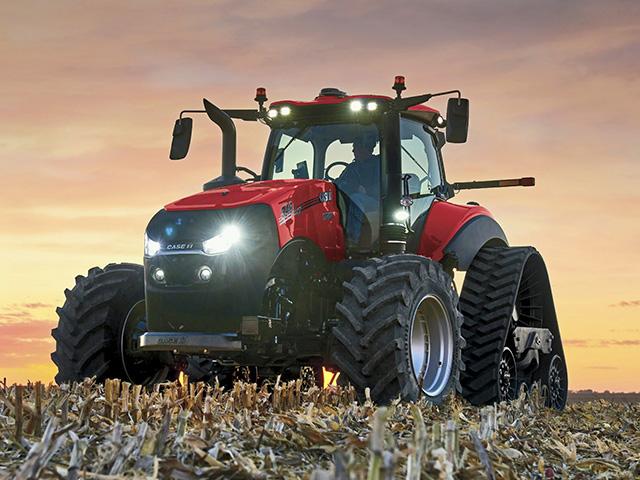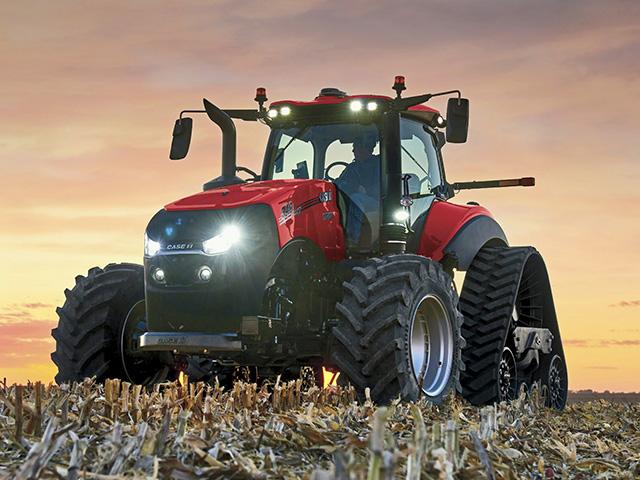MachineryLink
June Tractor, Combine Sales Mostly Immune to COVID-19
While there was a slight pause in March for tractor and combine sales, retail sales numbers for the first half of 2020 have arguably beat most expectations -- certainly above what any industry watcher would have reasonably expected given the factory-to-farm disruptions caused by the COVID-19 pandemic.
According to the Association of Equipment Manufacturers (AEM), June 2020 U.S. tractor sales rose nearly 33% over June one year ago. Through June, total tractor retail sales are up 10.5% compared to the same period in 2019.
June sales of self-propelled combines was a bit of surprise, as well. Unit sales were up 130 combines from June 2019 (485 units versus 355). That is a 36.6% increase over June a year ago. For the year 2020 through June, combine sales are down only 1.7%, or 35 units.
Four-wheel-drive tractor sales were the only sour note in this report. Four-wheel-drive tractor retail sales fell by a third in June compared to June 2019, AEM reported. Sales of these units are down 11.5% for the first half of the year, compared to the same period in 2019.
Still, the sales decline in raw numbers -- 110 four-wheel units sold in June, compared to 166 in June 2019 -- is not horrific. "Not great, but not devastating" is how Curt Blades, AEM senior vice president of ag services, described the sales numbers.
Blades said the uptick in unit tractor and combine retail sales in June, followed by increases in April and May, was a surprise. AEM itself predicted early this year that 2020 combine and tractor sales would be down slightly. But there appears to be an attitude among buyers that "This too shall pass," he said. What he means is that, while life has certainly changed, the business of farming and ranching rolls on; everyone has to eat, even in the face of COVID-19.
P[L1] D[0x0] M[300x250] OOP[F] ADUNIT[] T[]
Blades is cautious not to lean too hard on these numbers for the longer term. "We're seeing more areas of the economy open up from the previous pandemic-related shutdowns, so we're not entirely surprised some of that pent-up demand is expressing itself right now," Blades said. "Right now, there is too much uncertainty in COVID-19-related events and their impact on ag markets to determine whether or not this trend will continue."
The tractor numbers require closer examination.
It was sales of small and medium tractors that powered the June sales report. Unit retail sales of tractors 40 horsepower and below rose more than 37% over June 2019. That's 25,023 units sold in a single month, compared to 18,221 in June a year ago. Similarly, sales of tractors in the 40- to 100-hp range rose 27.5% in June 2020 compared to June 2019.
In much of the world, a 40-hp tractor is a pretty standard farm machine. Not in the U.S. It is a horsepower range generally not viewed as an agricultural tractor. But even small units generate important sales. "It's a volume that keeps the lights on," Blades explained. "It's been a solid market for the past couple of years."
But during the pandemic, this market is on fire. Why? A reasonable guess is that white-collar workers with some acreage are working at home and, while there, discovered all sorts of projects needing new horsepower. For the year, 40 hp and under tractor sales are up 13.3% over the first half of 2019.
That white-collar, currently working-from-home tractor buyer also may partially explain exceptional June sales for 40- to 100-hp tractors. These are buyers who may not be full-time farmers but who have enough work and production to support a small utility tractor. Dealerships sold 7,624 40- to 100-hp tractors in June compared to 5,978 a year ago. Over the first six months of this year compared to the same period in 2019, sales of these units are up 6.6%.
And then there are the 100-plus-hp, two-wheel-drive tractors that do commercial farming work. Unit sales rose 3.4% in June, compared to 2019. For the year, 100-plus-hp sales are down just 3.5%, or 298 tractors.
That sales would be mostly rising is a testament to the innovation of the manufacturing industry and the ability of dealerships to manage through a suddenly strange retail environment.
"I'm pretty proud of the manufacturers," said Blades. "They were quick to respond. When this hit, it was go-time; there were tractors already in the field." Manufacturers worked quickly to protect their parts supply chains, and they redesigned production floors to protect employees by limiting contact.
"When supply chains break, it's a problem," Blades said. "[Manufacturers] are learning how to mitigate these risks going forward."
Dealerships, too, are learning lessons from COVID-19, Blades said. They are finding high value in protecting employees -- from sending front-office employees home to keeping key technicians healthy. Technicians and mechanics keep the tractors running, and dealerships cannot afford to lose them two weeks at a time. So social distancing, no-touch parts drops and Zoom meetings have become a way of business.
Dealers and customers may well find new advantages in the new business order. "[Dealers and farmers] don't necessarily have to be face-to-face to make a sale," Blades said. "Virtual sales and education, quicker access to technicians, access to technicians they may not have had access to -- farmers will interact [differently] with their dealers and manufacturers."
Dan Miller can be reached at dan.miller@dtn.com
Follow him on Twitter @DMillerPF
© (c) Copyright 2020 DTN, LLC. All rights reserved.





Comments
To comment, please Log In or Join our Community .